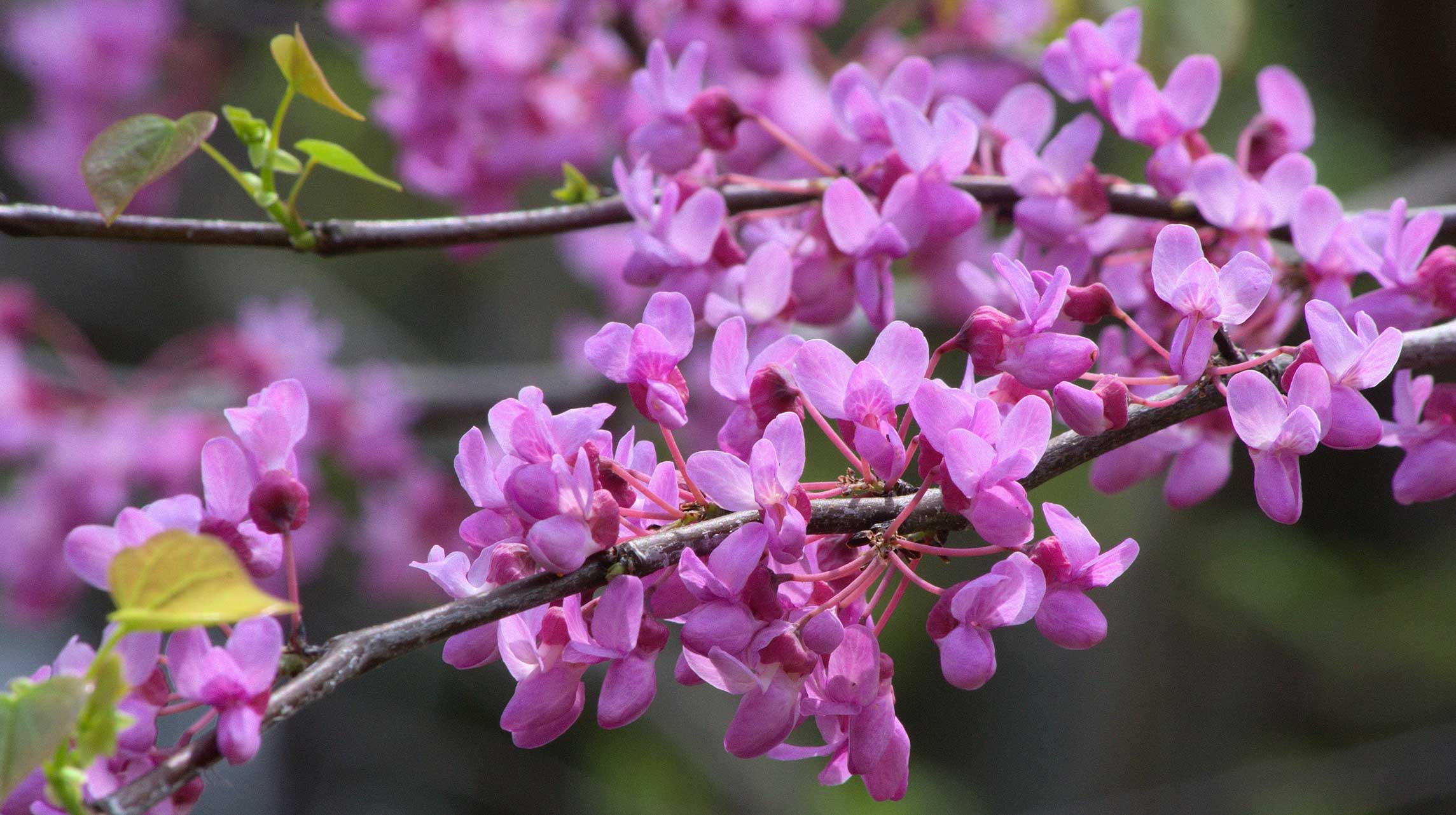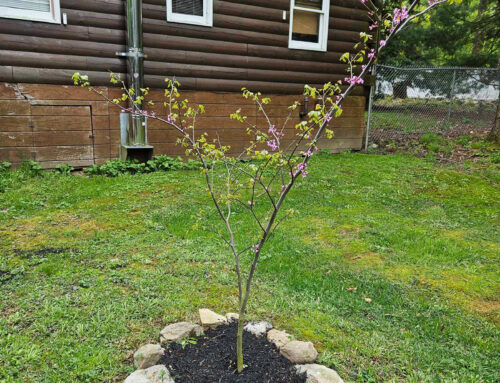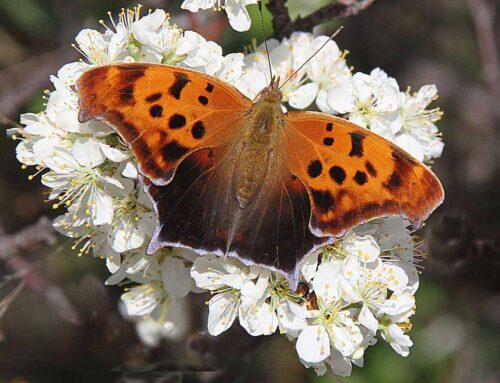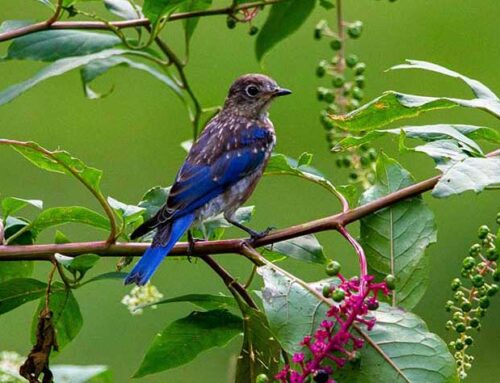Eastern Redbud – Cercis canadensis
Sustainable Landscaping with Native Plants
Growing throughout the eastern United States and being of a somewhat modest size, redbuds perform well as understory trees (a shrub or tree that is small enough and sufficiently shade tolerant to thrive under the canopies of other, taller trees) and are stunning when planted in groups. The horizontal branching pattern adds architectural interest to the garden and makes an attractive canopy for spring bulbs.
 Cercis canadensis are generally drought tolerant, but if planted in full sun, they should be watered on a consistent schedule during the hot summer months. To keep the soil cooler and evenly moist in the summer, apply a layer of mulch out to the drip line of the limbs. The leaf of the redbud is heart-shaped and broad, and two to five inches long. The leaves are simple, and the leaf pattern is alternate. The leaves turn bright yellow during fall, together with its showy flowers making it a very good landscape plant. The foliage of ‘Forest Pansy’ emerges a dark purple, gradually turning burgundy red as the leaves turn in the Autumn.
Cercis canadensis are generally drought tolerant, but if planted in full sun, they should be watered on a consistent schedule during the hot summer months. To keep the soil cooler and evenly moist in the summer, apply a layer of mulch out to the drip line of the limbs. The leaf of the redbud is heart-shaped and broad, and two to five inches long. The leaves are simple, and the leaf pattern is alternate. The leaves turn bright yellow during fall, together with its showy flowers making it a very good landscape plant. The foliage of ‘Forest Pansy’ emerges a dark purple, gradually turning burgundy red as the leaves turn in the Autumn.
The redbud usually has a short and often twisted trunk and spreading branches. The bark is dark colored, smooth and later becomes scaly with ridges. To maintain the tree’s structural beauty and health, you should prune it as needed to remove weak forks, crowded branches, and dead limbs. It’s best to prune right after flowering or in late fall while the tree is dormant.
An excellent choice if you wish to attract pollinators to your gardens. Redbuds are recognized by ecologists as atttracing large numbers of native bees and also provides nesting material and areas for them. In fact, the redbud is so indispensable to both insects and animals some experts rate it as one of our top 10 most important native flowering trees. The high rating stems from the species’ ability to provide these insects with an abundant supply of nectar and pollen when both are often hard to find elsewhere.
Eastern redbud – why to utilize them:
 1 – Clusters of tiny purplish-red buds explodel into a deluge of rosy pink flowers in early spring before the leaves appear, with the long-lasting blossoms putting on a show for two to three weeks.
1 – Clusters of tiny purplish-red buds explodel into a deluge of rosy pink flowers in early spring before the leaves appear, with the long-lasting blossoms putting on a show for two to three weeks.
2 – The buds appear to emerge right from the bark of twigs and branches and even on parts of the trunk, adorning the entire tree with miniature clusters of flowers.
3 – The trunk of the redbud commonly divides close to the ground, creating an interesting multi-trunk shape with graceful arched branches and a rounded crown.
4 – Heart-shaped leaves 2 to 6 inches in length emerge a reddish color, turning dark green in summer and then a bright canary yellow in autumn. The flowers also give rise to clusters of beanlike pods that remain on the tree into winter.
5 – The redbud adapts to a wide range of site conditions and thrives in most types of soil and levels of sun exposure.
At Lincoln Landscaping cultivating the environment is our life and livelihood. It is our number one goal to help our clients create and maintain beautiful landscapes while reducing the impact on the environment. Whether you are interested in a pollinator landscape garden design and build or other landscaping or property management project; we can create for you an environmentally friendly, organic and beautiful property.
Together with you, we create sustainable Eco-Systems. As the Navajo Indians would say “Yua Tah Hey”
Lincoln Landscaping “The Natural Choice”
Mike Kolenut President & CEO
https://lincolnlandscapinginc.com
(201) 848-9699







